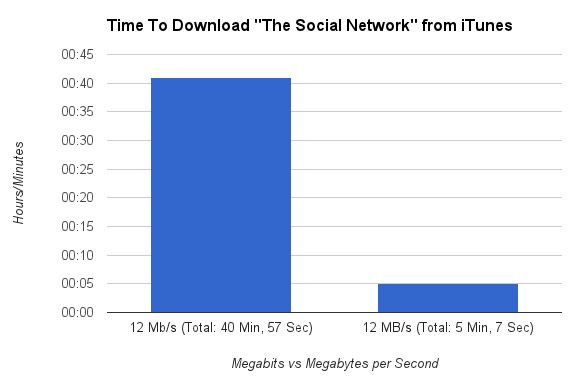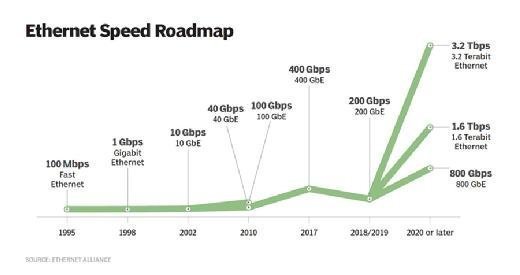Demystifying Megabits Per Second: What Customers Need to Know
Demystifying Megabits Per Second: What Customers Need to Know
Blog Article
Just How Megabits Per Second Impact Your Online Activities
The idea of megabits per second (Mbps) plays a crucial role fit our on-line experiences. As digital tasks proliferate, recognizing the ramifications of Mbps on gaming, streaming, and video clip conferencing becomes increasingly vital. Greater Mbps can enhance efficiency and reduce interruptions, while insufficient speeds may foster disappointment and inefficiency. Evaluating your household's certain requirements in relation to these speeds is important, specifically as several gadgets try data transfer. Yet, the nuances of just how Mbps influences various online tasks warrant additional expedition, particularly as our dependence on electronic connectivity proceeds to advance.
Recognizing Megabits Per Second
When taking into consideration internet rate, it's essential to comprehend the principle of megabits per second (Mbps), which works as a conventional dimension for information transfer prices. This statistics quantifies exactly how much data can be sent over a web connection in one second, providing a clear understanding of efficiency capabilities - Megabits Per Second. For context, one megabit amounts to one million bits, and Mbps is commonly utilized to express bandwidth for different on the internet tasks
A greater Mbps indicates a faster internet connection, making it possible for individuals to do tasks such as downloading files, searching web sites, and participating in online video gaming more successfully. Normal browsing needs around 1-5 Mbps, while streaming high-definition video may require 5-25 Mbps. Recognizing these needs is critical for figuring out the ideal internet speed required for specific activities.
In addition, the number of devices linked to a network can impact general efficiency. Multiple individuals streaming, video gaming, or downloading and install at the same time can stress offered transmission capacity, resulting in slower rates - Megabits Per Second. Assessing individual online behaviors and needs is essential in picking a web strategy that straightens with one's demands, making sure a smooth electronic experience
Streaming and Buffering Issues
Streaming high-definition web content has actually become a staple of modern-day on-line enjoyment, yet it is commonly gone along with by frustrating buffering problems. These disruptions can substantially diminish the watching experience, causing dissatisfaction and possible loss of audience interaction. Buffering occurs when the information transmitted from the streaming service is not gotten swiftly sufficient to preserve a smooth playback, frequently because of inadequate web speed gauged in megabits per second (Mbps)

Additionally, real-time streaming can be influenced by network blockage, which happens when several gadgets share the exact same transmission capacity. Subsequently, enhancing link rate and guaranteeing sufficient Mbps is important for a smooth streaming experience. As streaming services continue to progress, comprehending the impact of Mbps on buffering issues stays crucial for customers seeking uninterrupted entertainment.
Online Gaming Efficiency
The influence of web speed on on-line tasks prolongs past streaming, dramatically affecting on-line video gaming efficiency. In affordable video gaming, you can find out more low latency and high bandwidth are critical for a seamless experience. A rapid connection reduces lag, enabling gamers to react swiftly to in-game events, which can be the difference in between success and loss.
Data transfer, determined in megabits per second (Mbps), plays a vital function in sustaining numerous devices and gaming systems at the same time. Insufficient transmission capacity can bring about went down connections or lowered game high quality, negatively influencing gameplay. On the internet multiplayer video games require significant information transfer, especially throughout peak video gaming hours when many players are online.
Fast-paced first-person shooters require higher speeds to maintain responsiveness, while turn-based approach video games might function moderately continue reading this well on lower speeds. As online video gaming continues to develop, with enhancing visual fidelity and even more intricate multiplayer settings, the demand for greater Mbps will only heighten.
Video Clip Conferencing High Quality
In today's electronic landscape, video clip conferencing high quality is heavily affected by net speed, particularly in terms of data transfer and latency. Premium video calls call for enough data transfer to transmit sound and video clip data perfectly. Generally, a minimum of 1.5 Mbps upload and download speeds is suggested for standard definition video clip, while high-def video conferencing usually demands at the very least 3 Mbps.
Latency, or the hold-up in between sending out and getting data, also plays a critical function in the individual experience. Reduced latency guarantees that discussions circulation normally without awkward pauses or interruptions. Preferably, latency should be below 150 milliseconds for reliable interaction. Greater latency navigate to this site can bring about echo, lag, and disjointed interactions, which can impede partnership and interaction throughout conferences.
Furthermore, several participants in a video clip meeting can stress offered data transfer, requiring also higher rates. Network blockage, often triggered by simultaneous activities like streaming or downloading, can additionally weaken video quality. Thus, for companies counting on video clip conferencing for remote partnership, recognizing the connection between megabits per total and second communication top quality is crucial for keeping productivity and boosting digital communications.
Picking the Right Internet Plan
Choosing an ideal net strategy is important for guaranteeing optimal efficiency in various on-line tasks, specifically in settings that require high data transfer, such as video conferencing and online gaming. Megabits Per Second. When taking into consideration a net strategy, it is vital to review both the rate and data allowance to match your certain use requirements
For houses with several customers taking part in simultaneous activities, a strategy providing greater megabits per second (Mbps) is suggested. Typically, a minimum of 25 Mbps appropriates for basic streaming and surfing, while strategies going beyond 100 Mbps are preferable for more intensive jobs. Furthermore, think about the nature of your online activities; video conferencing calls for a minimum of 1.5 Mbps publish rate, while on the internet video gaming might need a lower latency yet regular connection.
Endless data plans can avoid strangling and disruptions, particularly if hefty use is prepared for. By attentively choosing an internet strategy tailored to your demands, you can improve your online experience, ensuring smooth, uninterrupted accessibility to your favored tasks.
Verdict
To conclude, the relevance of megabits per second (Mbps) in forming on-line activities can not be overemphasized. Greater Mbps promotes smooth streaming, minimizes buffering, enhances gaming experiences, and guarantees top notch video clip conferencing. On the other hand, insufficient data transfer can cause frustrating interruptions and diminished performance throughout numerous jobs. As a result, a detailed understanding of specific or home Mbps requirements is important for selecting an ideal net strategy that sufficiently supports diverse online activities and user needs.

Normally, a minimum of 25 Mbps is appropriate for conventional streaming and surfing, while strategies surpassing 100 Mbps are more suitable for even more extensive tasks. Additionally, consider the nature of your online tasks; video clip conferencing needs at least 1.5 Mbps upload rate, while on the internet video gaming may require a lower latency but consistent connection.
Report this page